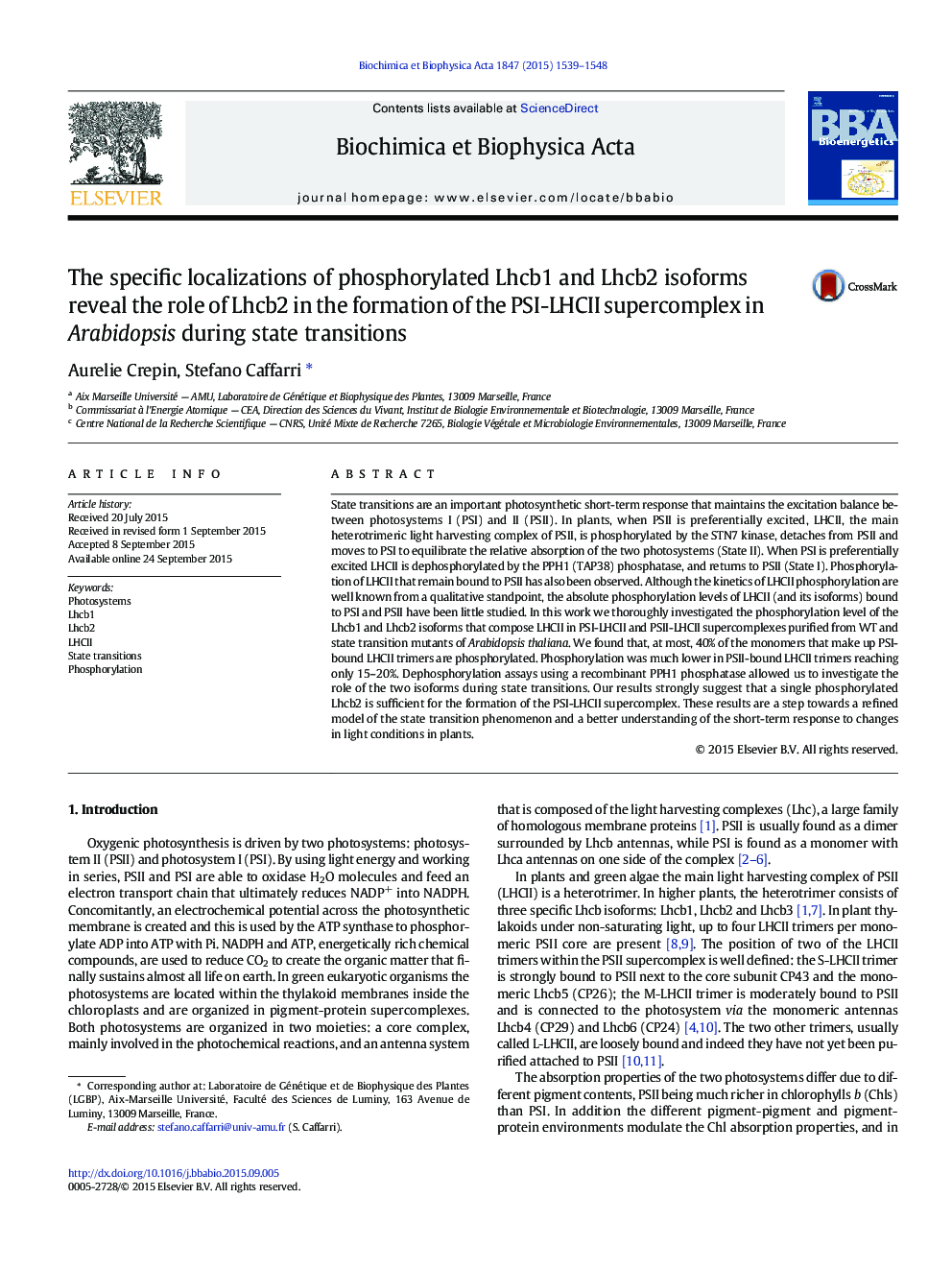| Article ID | Journal | Published Year | Pages | File Type |
|---|---|---|---|---|
| 1942076 | Biochimica et Biophysica Acta (BBA) - Bioenergetics | 2015 | 10 Pages |
•The absolute phosphorylation of LHCII bound to PSI or PSII in State II was measured.•LHCII phosphorylation in PSI-LHCII is higher (~ 40%) than in PSII-LHCII (~ 15%).•P-Lhcb2 constitutes the major part of phosphorylated LHCII in the PSI-LHCII complex.•A single P-Lhcb2 per LHCII trimer is sufficient to maintain PSI-LHCII association.•Grana cores are less phosphorylated than the margins due to loss of P-Lhcb2, not P-Lhcb1.
State transitions are an important photosynthetic short-term response that maintains the excitation balance between photosystems I (PSI) and II (PSII). In plants, when PSII is preferentially excited, LHCII, the main heterotrimeric light harvesting complex of PSII, is phosphorylated by the STN7 kinase, detaches from PSII and moves to PSI to equilibrate the relative absorption of the two photosystems (State II). When PSI is preferentially excited LHCII is dephosphorylated by the PPH1 (TAP38) phosphatase, and returns to PSII (State I). Phosphorylation of LHCII that remain bound to PSII has also been observed. Although the kinetics of LHCII phosphorylation are well known from a qualitative standpoint, the absolute phosphorylation levels of LHCII (and its isoforms) bound to PSI and PSII have been little studied. In this work we thoroughly investigated the phosphorylation level of the Lhcb1 and Lhcb2 isoforms that compose LHCII in PSI-LHCII and PSII-LHCII supercomplexes purified from WT and state transition mutants of Arabidopsis thaliana. We found that, at most, 40% of the monomers that make up PSI-bound LHCII trimers are phosphorylated. Phosphorylation was much lower in PSII-bound LHCII trimers reaching only 15–20%. Dephosphorylation assays using a recombinant PPH1 phosphatase allowed us to investigate the role of the two isoforms during state transitions. Our results strongly suggest that a single phosphorylated Lhcb2 is sufficient for the formation of the PSI-LHCII supercomplex. These results are a step towards a refined model of the state transition phenomenon and a better understanding of the short-term response to changes in light conditions in plants.
Graphical abstractFigure optionsDownload full-size imageDownload high-quality image (246 K)Download as PowerPoint slide
